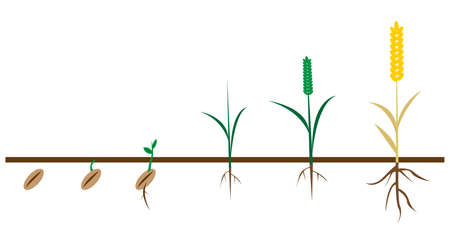Understanding Fungal Diseases in Greenhouse and Indoor Gardening
When it comes to greenhouse and indoor gardening, fungal diseases can quickly turn a thriving plant collection into a gardener’s headache. These pathogens—like powdery mildew, botrytis (gray mold), downy mildew, and root rot fungi—are common culprits in enclosed growing environments. Fungal diseases often start subtly: you might notice white powdery patches on leaves, wilting stems, brown or black spots, or fuzzy gray growth on flowers and foliage. The symptoms vary by fungus, but the end result is usually weakened plants and reduced yields.
Unlike outdoor gardens where wind and rain help disperse spores and dry out leaves, indoor spaces create a perfect storm for fungal outbreaks. High humidity, limited airflow, and crowded plant arrangements all contribute to an environment where spores can settle and multiply. Overwatering and poor drainage are also big factors—roots that stay wet for too long become prime targets for fungi like Pythium and Phytophthora. Even the best-kept greenhouses can experience problems if the right conditions line up. Understanding which pathogens you’re up against and how your indoor setup might be helping them is the first step toward effective disease management.
2. Monitoring and Early Detection
Effective management of fungal diseases in greenhouses and indoor gardening starts with vigilant monitoring and early detection. Spotting problems before they escalate is essential for protecting your crops and avoiding costly losses. Practical scouting involves routinely inspecting plants, especially the undersides of leaves, stems, and soil surface where fungal issues often begin. Using a consistent schedule—like twice-weekly walkthroughs—helps ensure you catch subtle changes that might otherwise go unnoticed.
Scouting Strategies
Focus on high-risk areas such as damp corners, crowded plant groupings, and spots near vents or doors where spores can enter. Pay attention to yellowing leaves, water-soaked spots, fuzzy growth, or powdery residue. When possible, rotate team members or change your inspection routine to avoid “blind spots” from familiarity.
Early Signs of Fungal Disease
| Fungal Disease | Common Early Signs | Where to Check |
|---|---|---|
| Powdery Mildew | White powdery patches | Leaf tops and buds |
| Botrytis (Gray Mold) | Gray fuzzy mold, brown spots | Flowers, fruit, stems |
| Damping Off | Seedlings collapsing at soil line | Soil surface around seedlings |
| Downy Mildew | Pale yellow patches, gray fuzz underneath leaves | Leaf undersides and edges |
Monitoring Tools & Technology
A mix of old-school observation and modern technology gives you the upper hand. Hand lenses help with close-up inspections, while digital thermometers and humidity monitors can alert you when conditions favor fungi. For larger spaces or commercial operations, consider automated environmental sensors or even smartphone apps that track temperature and humidity trends over time.
Proactive Record-Keeping
Keep a simple log of what you see during each walkthrough—date, observations, weather conditions inside the greenhouse. This habit not only helps spot patterns but also supports better decision-making if a disease does appear. Early action is key: when you catch something suspicious, isolate affected plants immediately and consult extension agents or local experts for confirmation and advice.

3. Cultural and Environmental Controls
One of the most effective ways to manage fungal diseases in greenhouse and indoor gardening environments is by creating conditions that are less favorable for fungi. This involves carefully managing humidity, ventilation, watering routines, and plant spacing. Below are some practical tips to help you keep fungal outbreaks at bay:
Adjusting Humidity Levels
Fungi thrive in high-humidity environments, so it’s crucial to monitor and control moisture levels in your growing space. Aim to keep relative humidity below 60% if possible. Use a reliable hygrometer and consider investing in a dehumidifier for larger spaces. Water early in the day so excess moisture has time to evaporate, and avoid misting plants unless absolutely necessary.
Improving Ventilation
Good air circulation disrupts stagnant microclimates where fungal spores can settle and grow. Install oscillating fans to ensure even airflow around all your plants. In greenhouses, open vents or windows when weather allows. If you’re growing indoors, make sure your setup isn’t tucked away in an unventilated corner; use exhaust fans or air movers as needed.
Smart Watering Practices
Overwatering is a common culprit behind root rot and other fungal issues. Water only when the top inch of soil feels dry to the touch, and make sure your containers have proper drainage holes. Bottom-watering can also help by keeping foliage dry—wet leaves are prime targets for many fungal pathogens.
Plant Spacing Strategies
Crowded plants restrict airflow and create humid pockets that fungi love. Give each plant enough room according to its mature size—don’t be tempted to pack them in just because they look small now. Prune lower leaves or thin out dense growth as needed to let light and air reach all parts of your plants.
Pro Tip: Regular Monitoring
Walk through your garden daily to spot any early signs of fungal trouble like spots, mold, or wilting. Early intervention is key! By adjusting these cultural and environmental factors, you’ll foster a healthier growing environment—and keep those pesky fungi in check.
4. Sanitation and Hygiene Best Practices
Keeping your greenhouse or indoor garden clean isn’t just about appearances—it’s your first line of defense against fungal diseases. Consistent, farm-tested sanitation routines break the cycle of infection, limit spore spread, and protect both plants and investments. Below are proven methods for maintaining top-notch hygiene in any growing environment.
Routine Cleaning Protocols
Stick to a regular cleaning schedule for all surfaces, tools, and equipment. Even minor lapses can let fungi get a foothold. Use disinfectants approved for horticultural use, such as hydrogen peroxide solutions or quaternary ammonium compounds, making sure to follow label instructions for concentration and contact time.
Farm-Style Cleaning Checklist
| Item | Frequency | Recommended Practice |
|---|---|---|
| Benches & Shelves | Weekly/Between Crops | Remove debris, scrub with detergent, then disinfect thoroughly. |
| Tools (pruners, trowels) | After Each Use | Dip in disinfectant or wipe down with alcohol-based solution. |
| Pots & Trays | Between Plantings | Soak in 10% bleach solution for 10 minutes; rinse well. |
| Floors & Walkways | Weekly/As Needed | Sweep regularly; mop with disinfectant to remove spores. |
| Irrigation Equipment | Monthly/Between Crops | Flush lines with sanitizing solution to prevent biofilm buildup. |
Personal Hygiene Habits for Growers
- Shoes: Use dedicated footwear for your garden space. Disinfect shoe soles before entry when possible.
- Hands: Wash hands thoroughly before handling plants or use disposable gloves—especially after dealing with diseased material.
- Clothing: Avoid wearing garden clothes out into public spaces where spores might be picked up and brought back in.
Avoiding Cross-Contamination
If you’re working with both healthy and infected plants, always handle the healthy ones first. Clean your hands and tools between tasks. Segregate new arrivals or sick plants in a quarantine area until they’re cleared of disease symptoms.
The Bottom Line: Consistency Pays Off
No matter how advanced your pest management system is, nothing beats old-fashioned cleanliness. By making these sanitation habits part of your routine, you’ll dramatically cut down on fungal outbreaks—keeping your indoor garden thriving season after season.
5. Biological and Chemical Treatments
Managing fungal diseases in greenhouses and indoor gardens often requires a strategic blend of biological and chemical interventions. With the diversity of products available in the U.S. market, it’s important to understand both organic and synthetic options, ensuring choices align with your garden’s goals, safety requirements, and local regulations.
Organic (Biological) Treatments
For growers looking to keep things natural, biological controls are increasingly popular. Products containing beneficial microbes like Bacillus subtilis, Trichoderma harzianum, or Streptomyces lydicus can outcompete or inhibit common greenhouse fungi. Neem oil, sulfur dust, potassium bicarbonate, and copper-based sprays are also widely accepted organic fungicides in the U.S. These treatments work best as preventative measures or at the very first sign of infection. Always check that any product is labeled for use on edible crops if you’re growing food plants indoors, and follow all manufacturer recommendations for application rates and intervals.
Synthetic Chemical Options
Sometimes, especially when an outbreak is severe or persistent, synthetic fungicides may be necessary. Popular active ingredients in U.S.-approved products include chlorothalonil, myclobutanil, propiconazole, and mancozeb. These products can provide a rapid knockdown of pathogens but must be used responsibly: rotate different classes of fungicides to prevent resistance buildup, wear recommended personal protective equipment (PPE), and never exceed labeled dosages or frequency of use. Always allow proper re-entry intervals after spraying—especially in enclosed spaces—and observe pre-harvest intervals on food crops.
Safe and Effective Use Recommendations
No matter which treatment you choose, safety comes first. Store all chemicals securely away from children and pets. Mix solutions carefully in well-ventilated areas. For biologicals, ensure storage conditions maintain the viability of living organisms (usually cool and dry). Document your applications so you don’t double up treatments or miss critical intervals. Integrated Pest Management (IPM) principles recommend alternating between treatment types (biological and chemical) when possible, combining them with cultural practices for long-term disease suppression.
Final Thoughts on Treatment Selection
Selecting the right treatment means balancing efficacy with environmental impact and human safety. Read product labels thoroughly—they contain crucial information specific to U.S. regulatory requirements. When in doubt, reach out to your local Cooperative Extension office for guidance tailored to your region’s climate and pest pressures. By combining smart product selection with consistent monitoring and good horticultural practices, you can keep fungal diseases under control in any greenhouse or indoor garden setting.
6. Integrated Disease Management Approaches
When it comes to keeping fungal diseases in check within greenhouses and indoor gardens, relying on a single method often isn’t enough for long-term success. Instead, growers should blend multiple strategies into an Integrated Disease Management (IDM) plan. This holistic approach focuses on combining cultural, biological, mechanical, and chemical tactics to minimize disease pressure and maintain plant health over time.
Building Your IDM Toolbox
The first step is understanding your garden’s unique environment and potential risk factors—think humidity levels, plant density, airflow, and previous outbreaks. Start by prioritizing strong sanitation habits: remove dead plant debris, clean tools regularly, and sterilize surfaces between crop cycles. Rotate crops if possible and avoid overcrowding plants to reduce moisture buildup and encourage air circulation.
Layering Biological and Mechanical Controls
Biological controls such as beneficial fungi or bacteria can help suppress pathogenic fungi without harming your crops or the environment. Pair these with physical barriers—like using disease-free potting mix, installing insect screens, or setting up drip irrigation to keep foliage dry. Consistent monitoring for early signs of disease lets you act fast before issues spread.
Smart Chemical Use as a Last Resort
If cultural and biological measures aren’t enough, choose targeted fungicides approved for edible or ornamental crops indoors. Always rotate fungicide classes to prevent resistance and strictly follow label instructions to protect pollinators, people, and pets. Remember: chemicals work best when integrated with other strategies, not as the sole line of defense.
Developing Your Holistic Plan
Successful IDM is about prevention first, rapid response second. Create a calendar for routine inspections, cleaning schedules, and environmental adjustments. Train everyone who works in your space to recognize early symptoms of common fungal diseases. By blending these methods thoughtfully, you’ll build resilience into your greenhouse or indoor garden—and enjoy healthier plants season after season.


